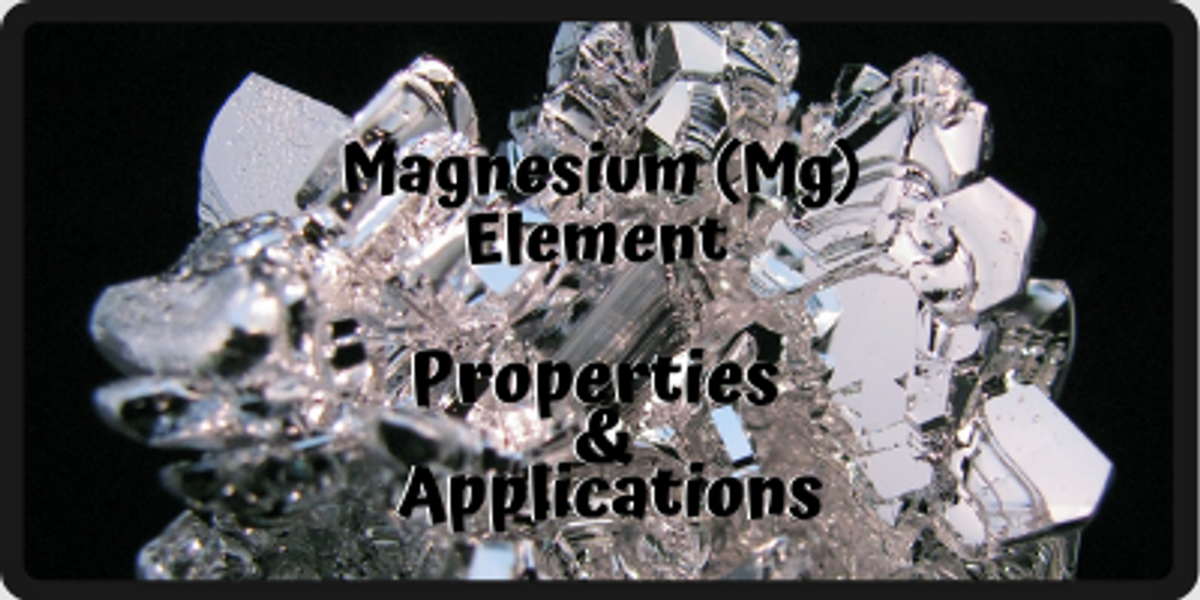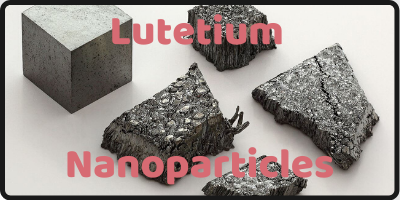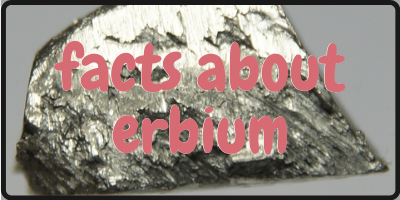Specifications Of Magnesium Element
Magnesium is an essential element of the periodic table and it has many industrial applications. It is of great importance due to its role in our body. It has peculiar characteristics. It is best known for preserving nervous and muscular balance. To avoid fatigue and stress, it is better not to miss magnesium. We will discuss everything related to Magnesium in this article!
The magnesium is a component having atomic number 12 and symbol Mg. Magnesium is alkaline earth metal. It is the 8th most abundant component in the earth's crust, the 3rd metal behind iron and aluminum. It is also the third component of salts dissolved in seawater. Like other alkaline earth metals, magnesium belongs to group IIA. It is sufficiently inert to air to allow its industrial use, either in the form of pure metal or as the main constituent of the alloy.
On the other hand, Magnesium is present in almost all cells of the body, where it participates among other things in more than 300 enzymatic reactions. In total, the body contains about 25 g of this mineral: 60% is stored in the bones, of which it helps to maintain the structure. A quarter is used by the muscles, where it contributes to muscle relaxation. The rest is distributed both in the brain and in key organs such as the heart, liver or kidneys: magnesium is used for the transmission of nerve impulses, the production of proteins and the regulation of heart rate.
Click Images to Learn About Other Elements That We've Discussed
Magnesium alloy
A magnesium alloy component can be made through manufacturing processes that employ the technologies commonly used for other metals: casting process, forging process of a semi-finished product, assembly of extruded and rolled products, machining of a laminated product with machine tools. A manufacturing process that starts from the hot plastically deformed product (e.g. laminate) and finishes the piece through secondary machine tool machining generally leads to better properties, in the face, however, of considerable complexity of the process and high costs. On the other hand, a conventional casting process is characterized by a low cost, but at the expense of the low mechanical characteristics obtainable on the material.
History
The name Magnesium comes from the Greek name of a district of Thessaly called Magnesia. This city was extremely rich in magnesium in different forms. In England, Joseph Black renowned magnesium as a component in 1755, and in 1808, Humphry Davy isolated the pure metallic form from a mixture of magnesia and mercury oxide HgO by electrolysis.
Characteristics

The physical properties of magnesium are summarized below:
- Magnesium is a good conductor of electricity; its electrical resistivity is, however, higher than that of aluminum.
- The frequent association of aluminum and magnesium, or even the substitution of one of the metals by the other, is explained by the physical properties of each of them.
- Magnesium alloys have, for the most part, a crystal lattice with a hexagonal mesh, the plastic deformation range of which is between 250 and 400 °C. They, therefore, lend themselves well to molding, forging and extrusion under pressure. Mg/Li alloys, the crystal lattice of which is a centered cubic mesh, lend themselves well to rolling, drawing and bending.
- It hardly ignites in the form of a block, but very easily if it is reduced to small chips or tape. In powder form, this metal heats up and ignites spontaneously by oxidation with oxygen in the air.
- It burns with a very bright white flame, hence it is used for flashes or flashlights at the beginning of photography and used for decades in the form of single-use bulbs. However, the production of ultraviolet light during the combustion of magnesium makes direct observation dangerous. The first flash lamps were fine magnesium wires which ignited following an electric spark.
- It has good weldability in a controlled atmosphere.
- It has flexibility in the design of components.
- Solid-liquid transformation occurs at atmospheric pressure at 651 °C. The liquid-gas transformation occurs at 105 °C under a pressure of 1013x105 Pa.
- The magnesium is very light (one third lighter than aluminum); white-silver in appearance, sit tarnishes slightly when exposed to air by the formation of an oxycarbonate.
- In solution, it forms Mg2+ ions. Magnesium salts are very soluble in water. The carbonate precipitates.
- Magnesium is Hypo-allergenic.
- It is the radioprotective and thermal regulator.
- It catalyzes many metabolic reactions (enzymatic catalysis, glycogenic and protein synthesis, phosphate transfer, ...)
- It is anti-inflammatory
- It is anti-platelet aggregation agent (protective role against thrombosis)
Applications
Some characteristics of magnesium and its alloys and examples of applications related to them are listed below:
- 1.It has high specific resistance. Therefore, it is used in frames and housings for liquid crystal panels, for desktop notebook computers, mobile phones, gears, engine cases, etc.
- 2.It has good heat dissipation. The thermal conductivity of magnesium is much higher than that of plastic. Electronic equipment enclosures can dissipate the heat produced by the circuits in a more efficient way than that built-in plastic, maintaining the characteristics of lightness and portability.
- 3.It has a lower density among all structural metal materials due to which it is used in automotive and aircraft components and portable electronic devices.
- 4.Some types of magnesium alloys have a greater ductility than aluminum alloys, so they can absorb impact energy without exhibiting a fragile fracture mechanism.
- 5.It has applications in housings and casings for mobile phones and radio transmission apparatus.
- 6.It has applications in computer bays, LCD projectors, and TVs. It’s also used in electromagnetic shielding (EMI shielding) and radiofrequency shielding (RF shielding).
- 7.It has excellent workability on machine tools.
- 8.Magnesium can be recycled without undergoing any degradation of physical properties, as often happens in plastic recycling. Furthermore, the energy required for the recycling process of magnesium alloys is less than that required by other metals.
- 9.Magnesium alloys have a lower resistance to cutting tools than most metallic materials. This makes it possible to turn and mill them at high speed, saving on processing times and costs and tool wear. Its alloy can acquire a high surface finish which often does not require the use of further processing.
- 10.Magnesium housings provide better electromagnetic shielding than similar metalized plastic products.
- 11.Its alloys can effectively absorb vibrational energy, which is desirable in all those applications where mechanical movement is present.
- 12.It has applications in sliding platforms for optical pick-ups and electric fans.
- 13.It’s also used in steering wheels and car seat frames.
- 14.The excellent castability and the possibility of creating very complex and thin-walled parts make high pressure die casting the most advantageous technology in many industrial applications. The components made by high-pressure die casting are widely used in the automotive sector, mainly aimed at reducing weight, and in electronic devices with the replacement of plastics and consequent lightening and robustness of the systems. The applications of magnesium can be extended to other fields, namely sport, leisure, power tools, etc.
Click Image to Learn About Gold Element Also
Use of Magnesium in Medicine
The magnesium in the form of a hydrate, hydrated oxide, carbonate, chloride, and other salts, is widely used in medicine and pharmacy. The magnesium ion Mg2+ plays a very important role in the ionic balance of the human body and must, therefore, be present in the diet just like calcium. In terms of body water balances, the Mg2+ ion is to the Ca2+ ion what the K+ ion is to Na+.
Many disorders can be due to a lack of magnesium: depression and anxiety, diabetes, muscle spasms, cramps, cardiovascular disorders, high blood pressure, and osteoporosis. It actively participates in the transmission of nerve impulses between neurons. The recommended daily allowance is estimated at 300 mg of magnesium per day (double for athletes or pregnant women) or 6 mgkg-1 of body weight.
Magnesium hydroxide (Mg(OH)2), obtained by reacting sodium hydroxide with a magnesium salt (chloride or acetate for example), is used in medicine to treat heartburn (in the form of milk of magnesia). Taking a magnesium supplement is common, in the form of magnesium chloride solution (MgCl2), carbonate sachets (MgCO3) or all the galenical forms offered in pharmacies. As a supplement, we take about 100 to 300 mg of Mg, which is equivalent to a few grams of magnesium salts per day.
The body does not produce magnesium but on the contrary, it consumes it more or less quickly according to physical activity and stress. It must, therefore, draw it from the daily diet and supplements of this diet if necessary. Excessive consumption of magnesium is eliminated naturally by the body in the urine. Magnesium, therefore, does not accumulate. Ingestion of large amounts of magnesium causes a laxative effect, or even results in diarrhea, so salt (hydrated magnesium sulfate) or magnesium chloride can be taken to purge. In this case, the magnesium remains in the intestine and causes a call for water by the osmotic effect. The small fraction of magnesium absorbed is effectively eliminated by renal filtration in healthy adults. Poisoning by an excess of magnesium can exist in children and the case of people suffering from renal insufficiency.
The biological role of Magnesium
Magnesium in the human body is used to:
- Help with relaxation.
- The formation of bones and teeth, with calcium and phosphorus
- Transmission of nerve impulses
- At high concentration, fight against constipation by osmotic action and local motor stimulation muscle contraction, heart rate
- Action on growth
- Promotes the fixation of calcium on the bone
- Contributes to immune defense mechanisms
- Fight against stress, sedative effect (muscle relaxant)
- Fight against oxalo-calcium lithiasis
Conclusion
To conclude, Magnesium is the lightest of structural metals. With its density of 1.74g/cm3, it is 30% lighter than aluminum and 70% lighter than steel. Magnesium also has superior vibration damping capacity, excellent electromagnetic and radio frequency shielding capabilities and can be completely recycled. Magnesium is an important component of several medicines. No less important, magnesium is an abundant element (about 2.7%) of the earth's crust, therefore practically inexhaustible. The continuous search for a technology that would allow to reduce costs and, at the same time, improve the mechanical properties of the material, has led to several developments: among these, it is believed that the emerging semi-solid transformation technology has characteristics capable of meeting these requirements.
References
https://www.osti.gov/biblio/4360690-history-magnesium
https://www.scimagojr.com/journalsearch.php?q=21100461936&tip=sid&clean=0
https://www.ncbi.nlm.nih.gov/pmc/articles/PMC5637834/
https://www.ncbi.nlm.nih.gov/pmc/articles/PMC4455825/
Recent Posts
-
Use of Carbon Nanotube in Touch Screen Technologies
Carbon nanotube (CNT)-based transparent electrodes offer flexibility, durability and cost advantages …8th Nov 2024 -
A New Approach to Obesity with Nanotechnology
Obesity stands out as a complex global health crisis that significantly increases the risk of chroni …1st Nov 2024 -
Graphene is the Word in Bionic Technology: EGNITE
Neuroprosthetic technologies have made significant advancements in recent years to enhance the qual …25th Oct 2024








